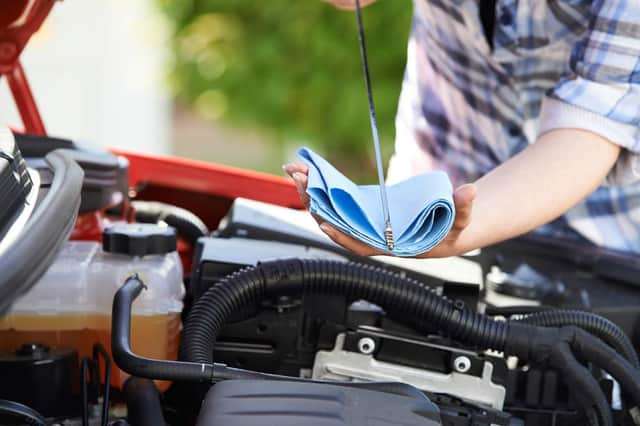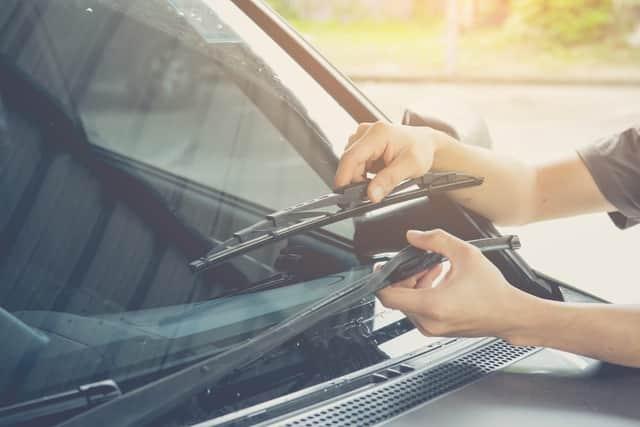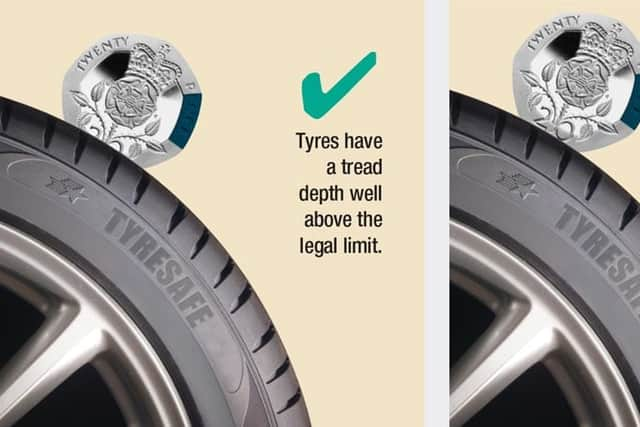Stay safe on the road with these post-lockdown checks


As parts of the UK begin to relax some lockdown restrictions and with further easing expected in coming weeks drivers are being urged to ensure their cars are safe for use.
Schools in England are due to reopen from 8 March, with more Scottish pupils also heading back from 15 March, potentially meaning more cars on the road as parents take their children to classes.
Advertisement
Hide AdAdvertisement
Hide AdDuring lockdown many cars have sat idle for weeks and MOT data from the Driver and Vehicle Standards Agency (DVSA) shows a rise in the number of cars presented with defects such as damaged or faulty tyres or headlights since the start of the first lockdown. Between April and December 2020 the number of cars with “obviously under inflated tyres” doubled compared with the same period in 2019, suggesting maintanence has been ignored.
Chris Price, head of MOTs at the DVSA, said: “As schools return, some motorists will need to use their cars more often than they have been recently.
“That’s why we’re urging all motorists to carry out some simple, visual checks before they get on the road again. And for those who are unsure about any issues, we recommend a professional check at a local garage for peace of mind.”
To help motorists get back on the road, the DVSA has created a “SAFE” checklist:
Service or health check if needed
Advertisement
Hide AdAdvertisement
Hide AdFor added peace of mind, get your vehicle professionally checked with a service or a health check, particularly if it is displaying any new warning lights. Your garage can check the things you can’t see, such as brakes, as well as interpret warning lights.
Air in tyres
Tyres need to be correctly inflated, without any cuts or bulges but can lose air and deteriorate when left stationary for a long period. Correctly inflated tyres reduce the risk of accidents, will last longer and will save you money on fuel.
Your car manual will tell you the right pressure for your tyres. Most petrol stations and garages will have a pressure gauge and air pump, so check when you fill up. At the same time look out for bulges and cuts.
Fill up screenwash


You need to check fluid is topped up and the windscreen wipers work, without streaking water. When the engine is cold, lift the bonnet, check the windscreen washer bottle and top up if necessary. Using washer fluid rather than water will help to clean the windscreen and prevent the washers freezing in winter.
Examine lights and tyre tread
Lights
Advertisement
Hide AdAdvertisement
Hide AdSince you last used the vehicle, a car bulb could have blown. Turn on all the lights and walk around the car. Give them a tap to check they’re not loose or damaged and check the colours are correct and match. Your car manual will explain how to change a bulb, or your garage can do this. You can test brake lights by reversing up to a garage door or window and pressing the brake. Look for a reflection in the rearview mirror.
Tyre tread
The legal tyre tread depth for cars is 1.6mm and the condition of your tyres is key to your safety. This is especially important when roads are wet and icy.
Turn the steering wheel fully to the left or right. Look for the treadwear indicators which are at the bottom of the tyre grooves. If they are flush with the level of the tread, you need to replace the tyre. Another good rule of thumb is the 20p test. Insert a 20p coin into the groove on the tyre. If the tread covers the outer band of the coin the tyre depth is legal. Check the tread depth is even across the tyre.


Lexus has also created its own post-lockdown care checklist for the coming weeks. As well as the DVSA advice, it recommends checking other under-bonnet fluids including oil and brake fluid.
Advertisement
Hide AdAdvertisement
Hide AdAlso, check your battery is charged and your car starts easily. When you start the car, Lexus recommends letting the engine run for a while. For conventional petrol and diesel engines approximately 20 minutes of running time is recommended to restore the battery charge used on start up. For its hybrid vehicles, Lexus recommends running the engine for at least an hour once a week to keep the battery topped up.
Give your brakes a visual examination. If the car has been stationary for an extended period or only used for short trips, a thin layer of rust is likely to have formed. This can be removed by gently pushing the brake pedal several times while the car is travelling at a slow speed and when the roads are clear of other traffic. If your brakes judder or pull, you should have your car checked by a professional.
Lexus also recommends cleaning the car inside and out. Not only will this help give your car a showroom-fresh feeling, it will also help remove any germs and dirt that have collected during lockdown. With a pack of wipes, a pair of gloves and a dry microfibre cloth, you can give most of the touch points a thorough clean. Make sure you wipe each part of the interior at least twice with a forwards and backwards motion to clean it completely. Using bleach-free anti-bacterial wipes will kill 99.9 per cent of germs lingering on the steering wheel or gearstick.